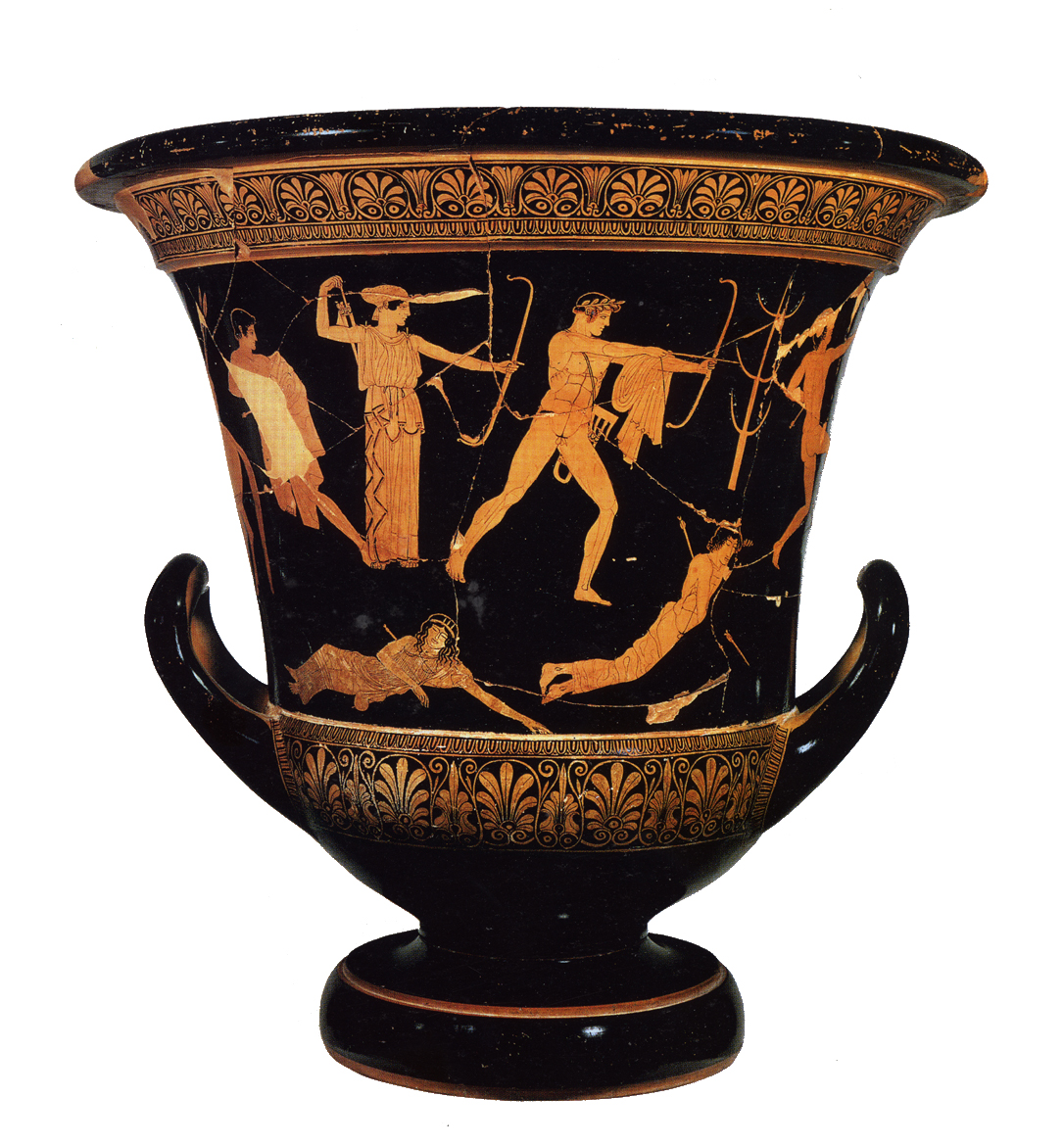Ceramics - Greek Amphora
amphora, ancient vessel form used as a storage jar and one of the principal vessel shapes in Greek pottery, a two-handled pot with a neck narrower than the body. There are two types of amphora: the neck amphora, in which the neck meets the body at a sharp angle; and the one-piece amphora, in which the neck and body form a continuous curve. The first is common from the Geometric period (c.900 bc) to the decline of Greek pottery; the second appeared in the 7th century bc. The height of amphorae varies from large Geometric vases of 5 feet (1.5 metres) to examples of 12 inches (30 centimetres) or even smaller (the smallest are called amphoriskoi). The average normal height is about 18 inches (45 centimetres). Amphorae, which survive in great numbers, were used as storage and transport vessels for olives, cereal, oil, and wine (the wine amphora was a standard Attic measure of about 41 quarts [39 litres]) and, in outsize form, for funerals and as grave markers. Wide-mouthed, painted amphorae were used as decanters and were given as prizes.
Black Figure Neck Amphora Red Figure Neck Amphora
Red Figure Neck Amphora

It's cool how these look so decorative but were used for storage.
ReplyDeleteThese are so cool! I think it is really interesting how these are so old but you can still see them in person
ReplyDeleteim super excited for this project. I think its really interesting that they were given as prizes back then and what their value is now. - Abbie Burns
ReplyDeleteit is cool how symmetrical these clay pots are- Will Watson
ReplyDeleteI like how these have survived through time and still look really good.
ReplyDeletePorter
i love the second one! it is the one i am doing for my pot.
ReplyDeleteThe first one is similar to my pot. I like how they survived this long. - Deldra Draper
ReplyDeletei like how the handles on the second one are so different from all the others
ReplyDelete-bella bosse
The second one's handles are fascinating
ReplyDelete- Paul